End of an era
As NASA’s space shuttles land for the last time, they leave behind a sound scientific legacy
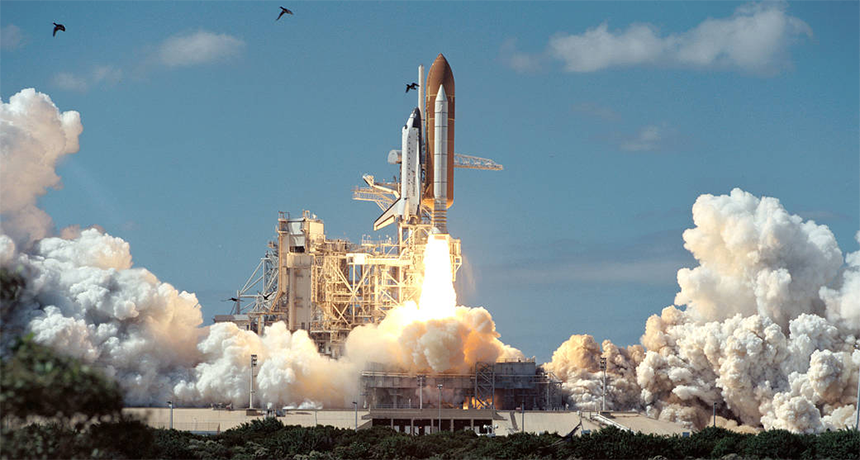
Space Shuttle Atlantis takes off Nov. 3, 1994. By May 2010 it would be ferrying crews and supplies to the International Space Station.
NASA
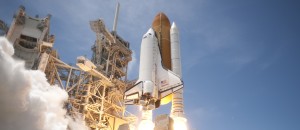
At the Kennedy Space Center on Cape Canaveral, Fla., the space shuttle Atlantis awaits its last liftoff. In June, it will be rolled to the launchpad, within sight of the white sands of the Atlantic coast. In the past 30 years, 134 previous space shuttle missions have launched from the same swath of land.
When the weather cooperates, the countdown will begin. The launch rockets will ignite, and the vehicle will lift off and soar into the sky, eventually becoming invisible to spectators on Earth. Like many previous missions, Atlantis will carry astronauts and equipment to and from the International Space Station more than 200 miles above Earth. (If you could drive a car straight up, you could drive there in less than four hours at highway speeds.)
The mission isn’t just the last blast for Atlantis; it will also mark the end of NASA’s Space Shuttle Program. Atlantis’ trip will be the final voyage to space by a U.S. space shuttle. The program ends this year, closing an important chapter in the history of human space flight.
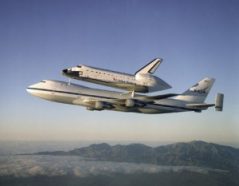
The space shuttles were the world’s first reusable space vehicles. For the past 30 years, they have carried people and equipment beyond Earth’s atmosphere into space and returned home. Shuttles hosted onboard experiments that helped scientists learn more about the effects of gravity. The Hubble Space Telescope, a powerful telescope that orbits Earth, rode into space in the bay of a shuttle. So did crucial parts of the International Space Station, one of the most complicated construction projects in history.
“The space shuttle program taught humans how to live and work productively in space,” says astronaut Franklin Chang-Díaz, who flew on a record-setting seven shuttle flights. (He shares the record with astronaut Jerry L. Ross.)
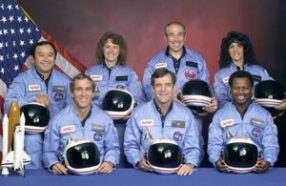
An enterprise with spectacular triumphs often comes with heavy risks, and the shuttle program was no exception. Though no mission was perfect, two catastrophic crashes plagued the program. The first happened on a cold January morning in 1986, when the shuttle Challenger exploded after liftoff. The accident killed all seven people on board. In 2003, the space shuttle Columbia burst into flames as it returned to Earth. None of the seven astronauts survived.
After each of these disasters, scientists and engineers worked hard to get the other shuttles flying again safely. “That’s what the crews we lost would’ve wanted us to do,” says Bob Crippen, who piloted the first space shuttle into orbit. Astronauts who flew on the shuttles knew about the dangers that came with the job, but they believed that space exploration was worth the risk.
Crippen says the space shuttles allow people to satisfy some of our natural curiosity about the world. “It’s human nature to explore, to go over the next hill and see what’s there,” he says.
Before the first countdown
Science fiction stories often describe spaceships that can travel to space and return. The idea didn’t become reality until the late 1960s, when a group of scientists gathered together to plan the future of U.S. space travel. They discussed sending astronauts on missions to Mars, building a possible space station to orbit the moon, and constructing space shuttles. In 1972, then-President Richard Nixon approved the space shuttle program. In 1977, scientists began flight tests of the first experimental orbiter. (An orbiter is the part of the space shuttle that resembles an airplane. It carries the crew and the cargo.)
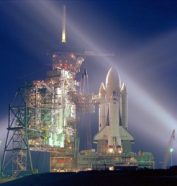
That test orbiter was originally named Constitution, but fans of the television show Star Trek wrote letters to NASA and asked for a name change. They got their wish, and the orbiter was renamed Enterprise, in honor of the featured spaceship on the show. Enterprise, unlike its television counterpart, wasn’’t built for space travel — its job was to make sure the space shuttle would work.
On April 12, 1981, Columbia became the first shuttle to enter Earth’s orbit. It stayed there for more than two days, which was long enough to circle the globe 37 times. Over the next few years, Columbia was joined by four other orbiters: Challenger, Endeavour, Atlantis and Discovery.
Each ship was about as long as three school buses and about as wide as two. The orbiter flew into space with the help of two attached rocket boosters and an enormous fuel tank, which provided fuel to the shuttle’s engines. (In pictures of the shuttle, the giant fuel tank is easily identified by its dark orange color.) Together, they provided enough oomph to get the shuttle into orbit.
The Discovery shuttle flew the most missions, 38, and Challenger flew the fewest, 10. For the first few years, the shuttles operated like space trucks that carried heavy satellites into orbit, including those for private companies and for the Department of Defense.
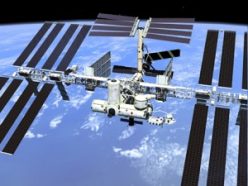
George “Pinky” Nelson, who flew on three shuttle missions, said the biggest change to the program came after January 28, 1986, when the shuttle Challenger exploded 73 seconds after takeoff. The crash killed everyone on board, including Christa McAuliffe, who was chosen to be the first teacher in space. An investigation showed that Challenger crashed because a seal broke in one of the rocket boosters.
“We were rushing to fly more missions and weren’t paying attention to some of the deficiencies we had in our hardware,” Crippen remembers. “We learned some hard lessons.”
Tragedy struck again in 2003, when the shuttle Columbia burst into flames on its way back to Earth, killing all seven people on board. The accident happened over Texas, easily visible to anyone watching the sky. Columbia crashed because the heat-protection system on its left wing had been damaged. Without that protection, intense heat from the fast-moving vehicle destroyed the wing and eventually the shuttle.
In January 2004, President George W. Bush announced the shuttle program would be shut down in 2010. (This was later extended to 2011.) NASA prepared to retire the shuttles.
Shuttle science
The space shuttle itself was a scientific marvel. It required scientists and engineers to tackle tough problems, and their solutions led to advances in technology. The material used to insulate shuttles from extreme heat, for example, now protects NASCAR drivers. The shuttle’s fuel pump inspired doctors to create a new device that helps people in heart failure. A lighting system used to help grow plants on the shuttle is now used to help treat brain tumors in children. Science on the shuttle is now used in infrared cameras, jewelry design and safety devices.
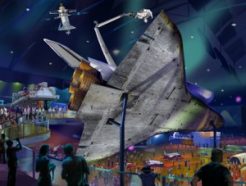
Science projects on the shuttle “showed people what was possible, and then people could improve equipment on the ground,” says astronaut Janice Voss, who went on five shuttle missions, during which she circled the Earth 779 times.
Astronaut Crippen says the shuttle program gave science a boost. “People going to war drives technology, but it’s better to do it with a peaceful endeavor like flying people into space,” he says. “It brings the world together. The more we work together with other nations, the better off the world will be.”
The shuttle played an important role in two of the biggest space projects to date: the Hubble Space Telescope and the International Space Station (ISS). In 1990, the shuttle Discovery delivered the telescope to orbit. Since then, Hubble has taken pictures of deep-space wonders like distant galaxies, exploding stars and planetary nebulae. Its images have revolutionized scientists’ knowledge of our solar system and the universe.
In 1998, the shuttle Endeavour transported one of the two first modules of the ISS to orbit. Since then, Endeavour and the other shuttles have been used to deliver supplies and people to the ISS. Astronauts have flown to the ISS on space shuttles, stayed for weeks or even months, and then returned on later flights.
“The International Space Station proved we can do major construction projects in space,” Crippen says.
From small projects to large, international collaborations, the shuttle’s contributions to science will last long after Atlantis has landed for the last time.
Last landing
The space shuttle orbiters may not fly again, but they’re not going away. They will be on display for the public. The record-setting Discovery will retire to the National Air and Space Museum’s Stephen F. Udvar-Hazy Center in Virginia. The test vehicle Enterprise is headed to the Intrepid Sea, Air and Space Museum in New York City. Atlantis will head to the Kennedy Space Center in Florida. Endeavour, parts of which were built in California, will return to the west coast, to the California Science Center in Los Angeles.
As the shuttle era ends, a new one may be getting off the ground. NASA is now investing in private companies to build the next generation of space transport vehicles. The goal is to build cheap, safe and efficient vehicles that will travel to and from Earth’s orbit — or even beyond. In April 2010, President Obama gave an address in which he spoke of sending people to an asteroid, or even Mars. The potential is great, but the reality is that no one is sure what will happen next.
“The plan [to get people in space] is a little ill-defined at this point,” Crippen says, “but I feel certain that people are going to continue to fly in space.”
Whatever happens in the future, says Nelson, will depend on collaboration among nations. Big space projects require big science — and one nation may not have all the necessary resources. But Nelson thinks it can be done, and he’s optimistic. The former astronaut, who now teaches at Western Washington University in Bellingham, says young people today could be the ones piloting ships to asteroids or Mars in the near future.
“When you’re looking at the future, things look like they’re going so slowly,” he says, “but when you look into the past, they look like they happened so fast. I suspect exciting things are going to happen in my lifetime.”
Many shuttle astronauts remain involved in the quest to get people back in space. Chang-Díaz now leads a company that’s designing and building rocket engines that will allow future astronauts to travel farther and faster than ever before. “There are even more exciting times still ahead,” he says. “We welcome all of you to join us on this adventure.”
POWER WORDS (adapted from the New Oxford American Dictionary)
orbit Move around a star, planet or moon, under the influence of gravity. For example, the International Space Station orbits Earth, and Earth orbits the sun.
celestial Positioned in or relating to the sky, or outer space as observed in astronomy.
orbiter A spacecraft designed to go into orbit.
module Each of a set of standardized parts or independent units that can be used to construct a more complex structure, such as an item of furniture or a building.







